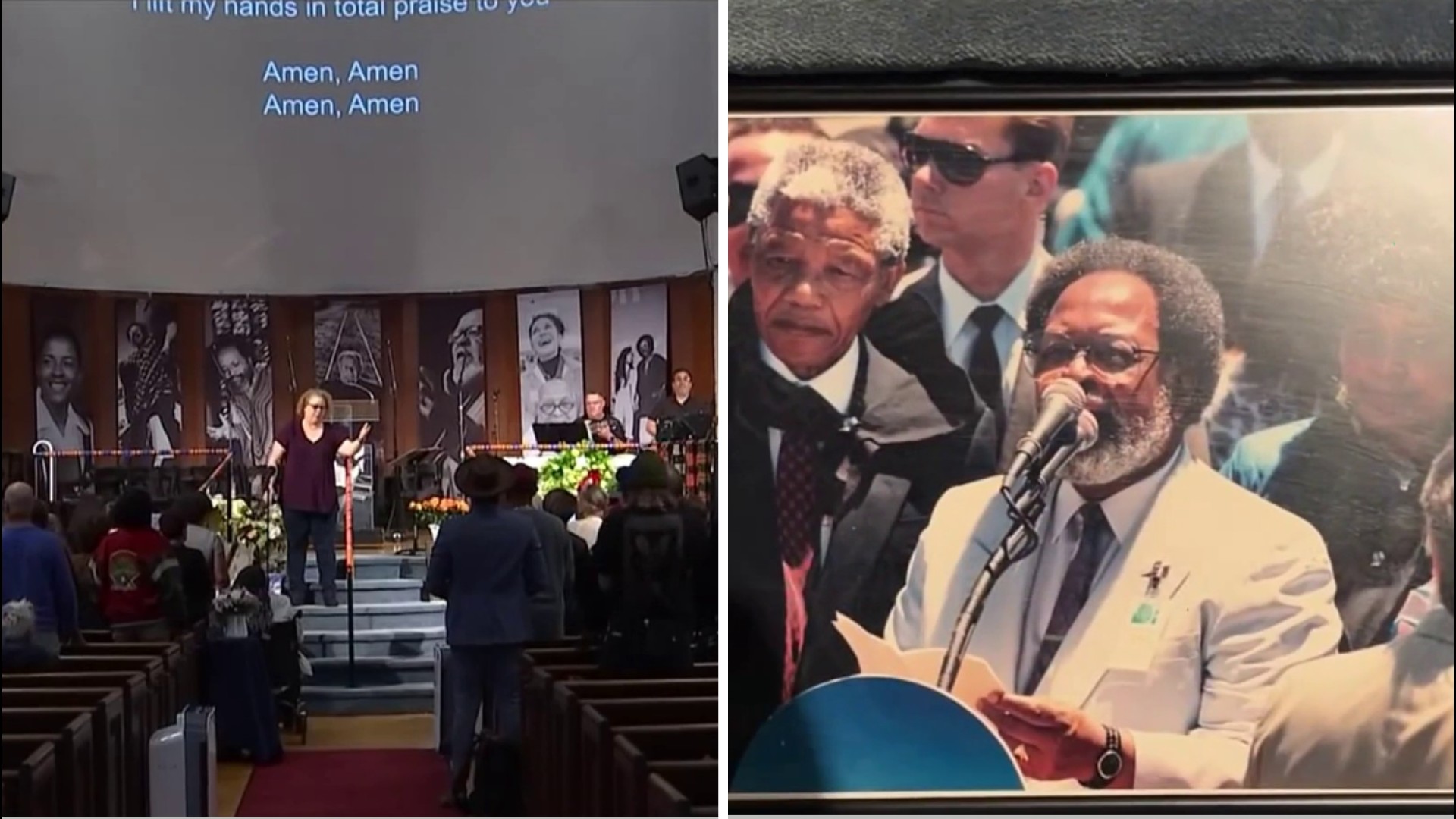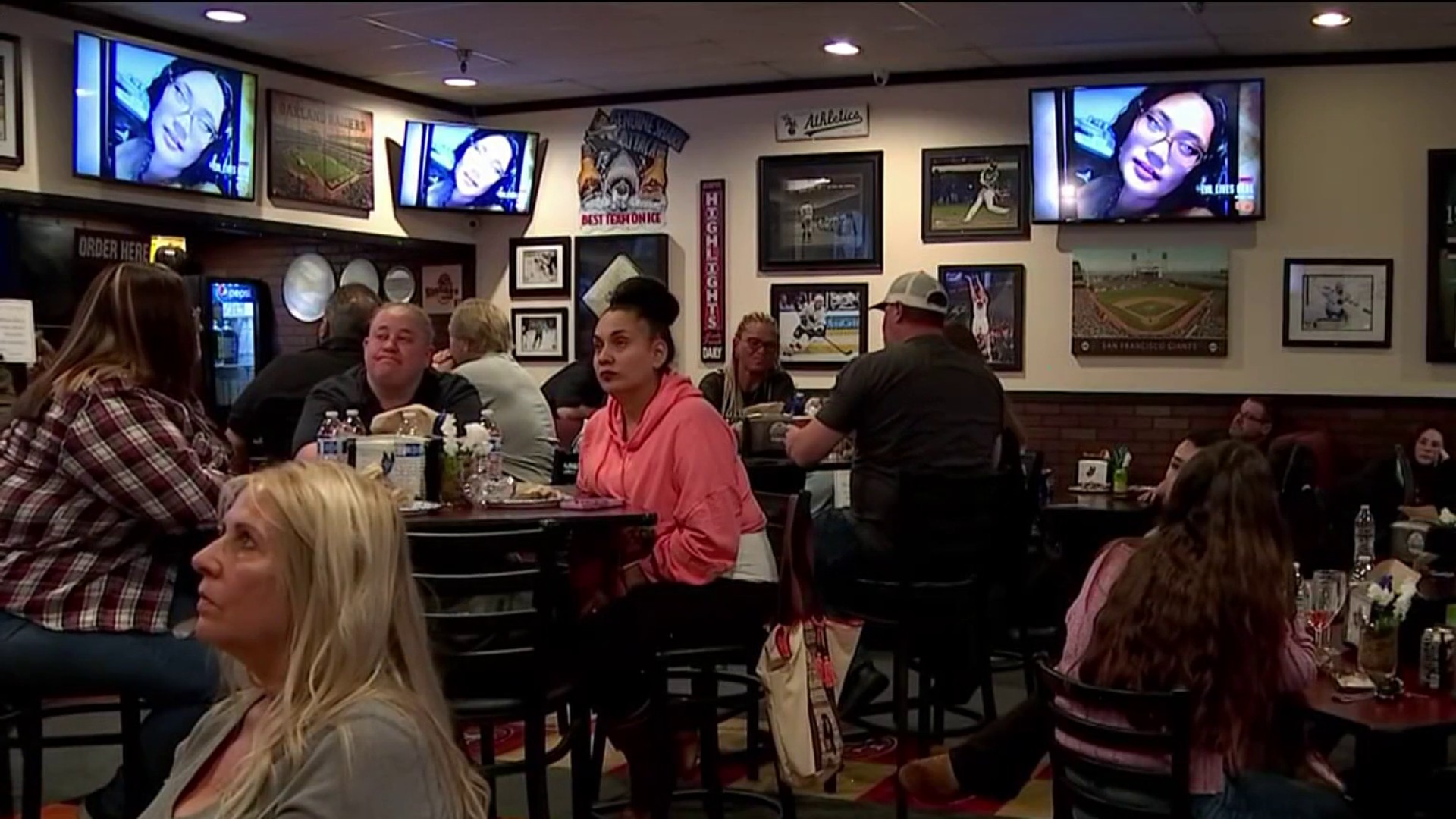Artist Peter Hudson launched toward a workbench in a Treasure Island warehouse - stopped short as if hit by lightning, and bolted in another direction - pinging with ideas through the work space like a spastic pinball. The ideas come, and Hudson is obliged to follow.
“I’m compelled, I’m obligated,” said Hudson in a rare moment of stillness. “I feel like I’m a slave to these visions.”
Hudson envisions life-sized monkeys swinging from branch to branch chasing an apple, a mythological skeleton paddling eternally down the river Styx, a hand dangling a golden yo-yo just above the reach of a leaping figure. But if these are demons in Hudson’s mind, he’s found a way to exorcise them by integrating them into the massive stereoscopic zoetrope sculptures he’s become known for.
“I’ve always, always, always had all these ideas in my head,” said Hudson, climbing up a 40-foot base resembling a metal tree.
The Zoetrope is the earliest form of film making dating back to the 1800s. It consists of a cylinder with a progression of images inside with slots to peer through. As the wheel spin, the motion gives the viewer the illusion of movement. Hudson figured out a way to create the effect with life-sized sculptures, using spinning motion and strobe lights to create something akin to three-dimensional frames of film - a film that plays right in front of you.
The technique has allowed him to create life-sized moving sculptures such as divers plunging into a desert or golden figures running up the trunk of a 40-foot tree before diving down.
“With that little amount of time you have,” said Hudson, “a cyclical loop, you can tell some amazing stories.”
Local
Hudson’s creative mind engaged in his early years growing up in Ben Lomond near Santa Cruz, where he developed a fascination for film making, animation and magic.
“Very early,” he said, “I was always given that permission to be myself.”
He honed his skill in the building of fictitious worlds by working 10 years as a set-builder for the San Francisco Opera, and later in the Bay Area’s film industry - building sets for movies and TV series like Nash Bridges.
But his own art kept calling - drawing him back to his large spinning figures - inanimate objects which become ghostly characters whirring to life.
“It just blows people’s minds,” said Hudson’s longtime friend and volunteer Meme Bayardo. “Sometimes people just stare and don’t understand what it is.”
Hudson’s visions are contagious, drawing dozens of volunteers who labor in his warehouse, carrying out the details of his ideas.
“I feel like it’s a gift that he’s allowing me to participate in,” said volunteer Karen Allman. “He’s giving me the gift of being a part of something magic.”
Behind the curtain of Hudson’s magic are feats of engineering, science and film arts. His technical trust includes Pixar animators and cutting-edge engineering experts. Still, Hudson fearlessly dips into each aspect of the production with the curiosity of an eternal seeker.
“For me a big part of creative process is figuring out how to do stuff,” Hudson said.
Hudson’s zoetropes have appeared at the Burning Man arts festival held annually in Nevada’s Black Rock Desert. They’ve also been installed at music festivals across the U.S. and Europe. Hudson describes the building of his contraptions as incredibly stressful - expensive and time consuming. Yet, it’s a compulsion that won’t seem to leave him.
“It’s torture and I keep coming back and doing it again,” he said with a half-grin.
Inside the warehouse, Hudson climbed the large metal base of his newest piece called Eternal Return - laden with golden figures in various poses of a dive. When in motion, the figures will repeat the same dive over and over - ending back at the place where they started - only to repeat it yet again. But rather than view the gesture as a possible projection of the artist’s own inner-frustration - Hudson said the piece is in fact his way of avoiding life’s repetitions.
“This is sort of my way of facing that and going ‘look i’m not doing that,” said Hudson. “That’s what I do not want to do is be on that treadmill and keep doing that same thing.”



